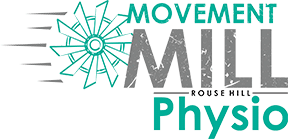For many of us, the desk has become a second home. Long hours staring at screens, back-to-back meetings, and little time to move can seem like the price of modern work. But if you’ve noticed your migraines creeping in more often—or worsening after a day at your desk—your job setup may be playing a bigger role than you realize.
Migraines are not just “bad headaches.” They’re complex neurological events that can bring pain, sensitivity to light and sound, vision changes, nausea, and fatigue. While genetics and other factors play a role, your work environment and daily routines can be powerful triggers.
Let’s break down how your desk job might be fueling your migraines—and what you can do to take control.
How Desk Work Triggers Migraines
1. Poor Posture and Ergonomics
Hours spent leaning forward, hunching over a laptop, or craning your neck to see a monitor can strain the muscles in your neck and shoulders. This constant tension can spark headaches on its own and may also make migraines more frequent and severe.
2. Screen Time and Lighting
Bright monitors, blue light exposure, flickering screens, and overhead fluorescent lighting are well-known migraine triggers. Even the contrast between your screen and the surrounding room can set off visual stress that contributes to attacks.
3. Sedentary Habits
Sitting for long stretches reduces circulation and stiffens muscles. Add skipped meals, dehydration, or irregular coffee breaks, and you’ve got the perfect storm for a migraine.
4. Environmental Factors
It isn’t just your desk and screen. Office air conditioning, strong perfumes, cleaning products, or even the hum of machinery can irritate the senses. For migraine-prone individuals, these small irritants can tip the balance into an attack.
5. Stress and Routine Disruptions
Deadlines, nonstop emails, or disrupted sleep schedules all add fuel to the fire. Stress hormones, combined with irregular routines, can lower your migraine threshold, making attacks more likely.
Signs Your Desk Job Is a Migraine Trigger
- Headaches or migraines appear more often on workdays than weekends.
- Pain starts in your neck or shoulders and radiates upward during the day.
- Screen glare or harsh lighting seems to make symptoms worse.
- Attacks often follow long meetings, skipped meals, or late nights catching up on tasks.
If these sound familiar, it’s time to take a closer look at your workspace and habits.
Practical Ways to Reduce Migraine Risk at Your Desk
Optimize Your Setup
- Keep your monitor at eye level and about an arm’s length away.
- Adjust your chair so your feet are flat on the floor and your lower back is supported.
- Position your keyboard and mouse so your shoulders stay relaxed.
Manage Screen & Light Exposure
- Use anti-glare filters or adjust screen brightness.
- Try blue-light filtering glasses or software that reduces eye strain.
- Swap harsh overhead bulbs for softer lighting when possible.
Build Healthy Desk Habits
- Take a short stretch or walk every 30–60 minutes.
- Drink water consistently throughout the day.
- Keep meals and snacks regular to avoid sudden drops in blood sugar.
Reduce Environmental Stressors
- If possible, sit away from strong smells or noisy equipment.
- Use noise-cancelling headphones in loud spaces.
- Keep your workspace well-ventilated.
Prioritize Stress Management
- Incorporate breathing exercises, mindfulness, or short movement breaks into your workday.
- Try to keep a consistent bedtime and wake-up schedule.
- Keep a migraine journal to spot patterns in your work routine and triggers.
When to Seek Help
If migraines are interfering with your ability to work or enjoy daily life, it’s important to talk with a healthcare professional. Treatments may include preventive medication, physical therapy, or lifestyle adjustments tailored to your unique triggers.
Final Thoughts
Your desk job doesn’t have to control your health. By making small adjustments to your environment, building movement into your day, and learning to recognize your triggers, you can lower your migraine risk and reclaim your productivity.
If you’re looking for structured guidance, The Movement Mill offers targeted programs that blend ergonomic education, posture correction, and movement strategies designed to reduce pain and improve energy levels at work. It’s a proactive way to protect both your career and your well-being.


